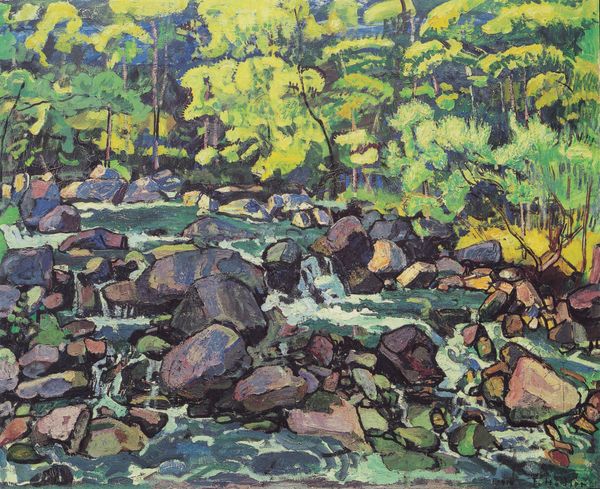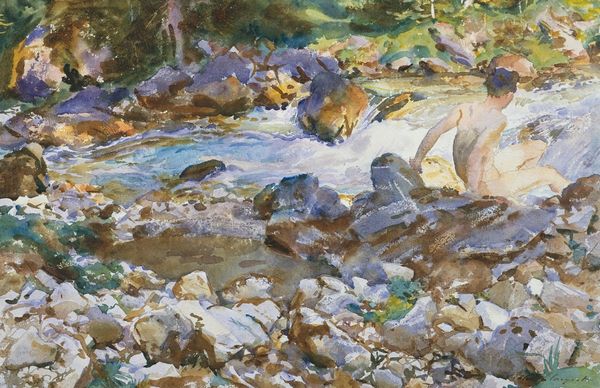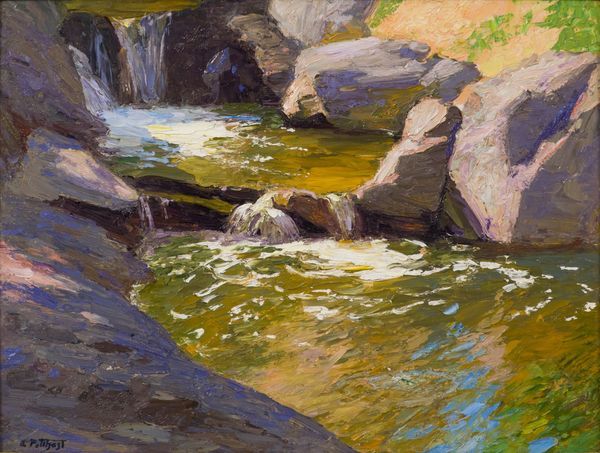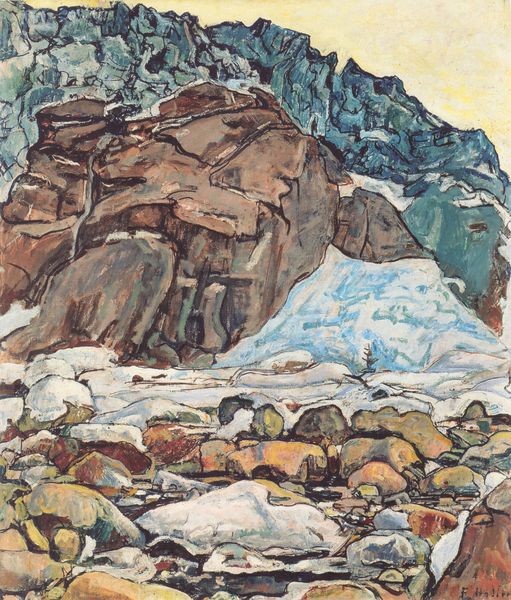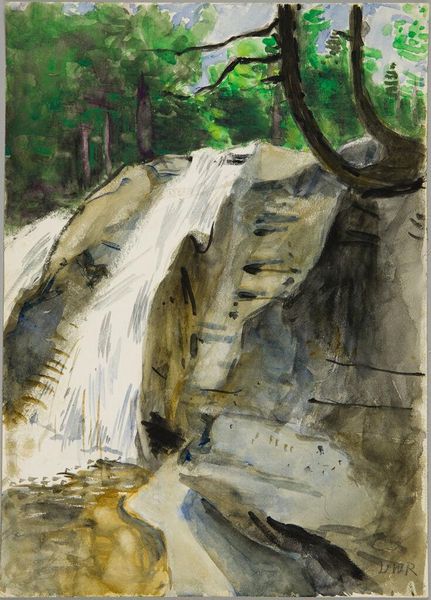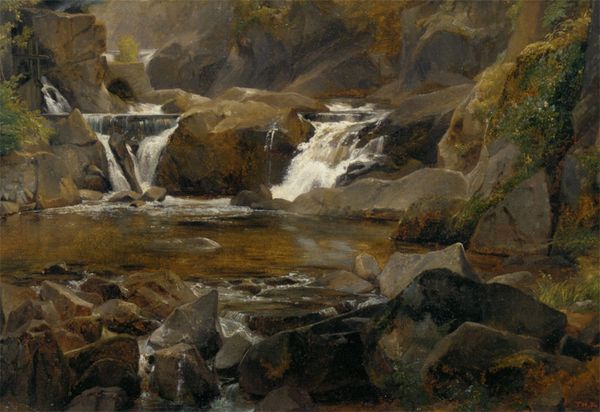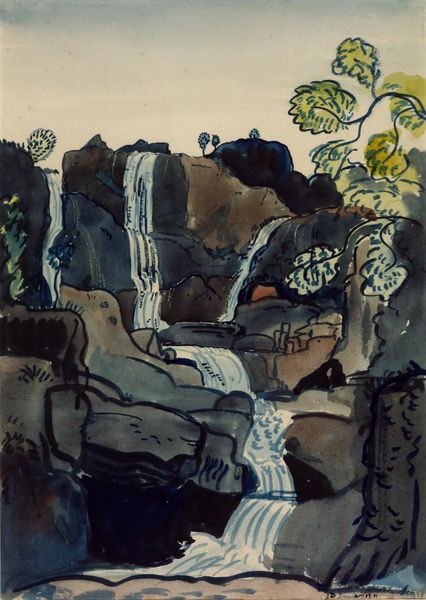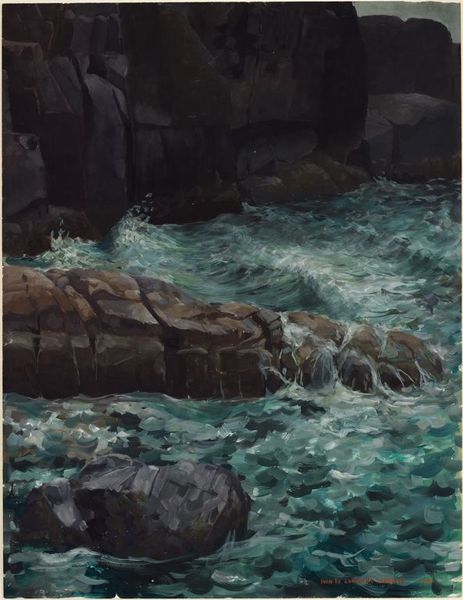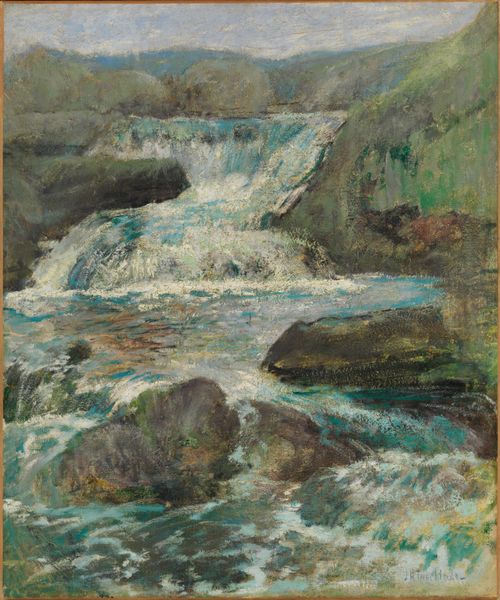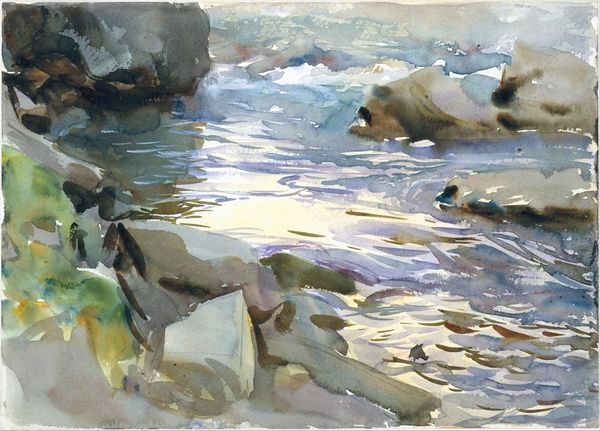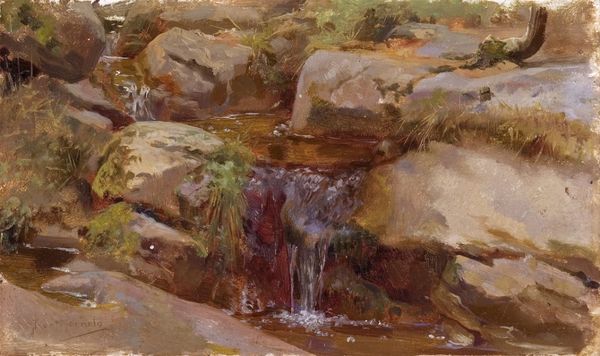
oil-paint, impasto
#
oil-paint
#
landscape
#
impressionist landscape
#
oil painting
#
impasto
#
rock
#
mountain
#
expressionism
#
expressionist
Dimensions: 82 x 98 cm
Copyright: Public domain
Curator: This is Ferdinand Hodler's "Mountain stream near Champéry," painted in 1916. It's an oil painting rendered with a very noticeable impasto technique. What are your initial impressions? Editor: It feels rugged. Raw, almost. The heavy impasto gives everything—the rocks, the water—a weighty physicality. There’s a tension between the stillness of the rocks and the implied motion of the water. Curator: Hodler was deeply interested in the landscape and his artistic process was heavily influenced by symbolism and Expressionism, even drawing on earlier artistic modes like Impressionism. Notice how the application of oil paint itself is key to its message, wouldn't you say? Editor: Absolutely. The thick paint transforms the landscape into something palpable, almost sculptural. The emphasis is not on perfectly mimicking nature, but on expressing the energy inherent in these forms. It begs questions, doesn't it, about Hodler's access to materials during this time. Curator: Given its creation during the first World War, this landscape represents a particularly interesting shift. Hodler publicly supported the German cause, then retracted it after they invaded neutral Belgium. His relationship to institutions and authority became more complicated at that point, yes? Editor: Precisely. Switzerland’s neutrality plays an important part here. This depiction of the natural world acts, perhaps, as a kind of escape but also, as a declaration of independence against war's disruptive presence in wider Europe. Curator: It certainly showcases a desire for authenticity, too. By making the painting so tactile and highlighting the inherent materials that composed it, Hodler could have aimed to create an unadulterated object beyond social concerns. Editor: Perhaps that accounts for its timeless appeal. Despite its historical context, it speaks to a universal experience: the powerful and sometimes brutal beauty of the natural world. It would be great to see more archival documentation on Hodler's workshop practices. Curator: I concur. It would bring yet another enriching perspective on Hodler’s fascinating engagement with materiality. Editor: It all comes together, giving us an evocative snapshot of a specific time and place.
Comments
No comments
Be the first to comment and join the conversation on the ultimate creative platform.
